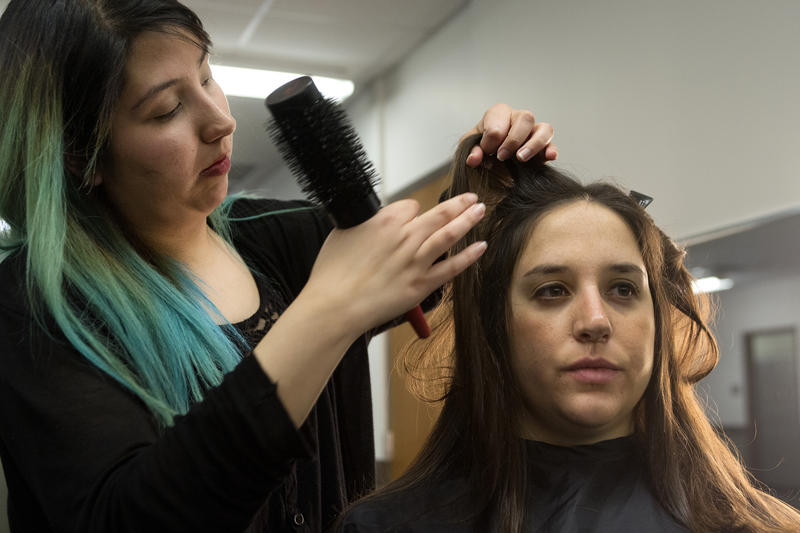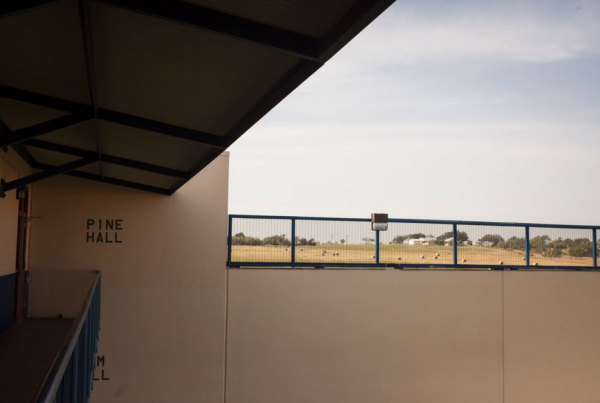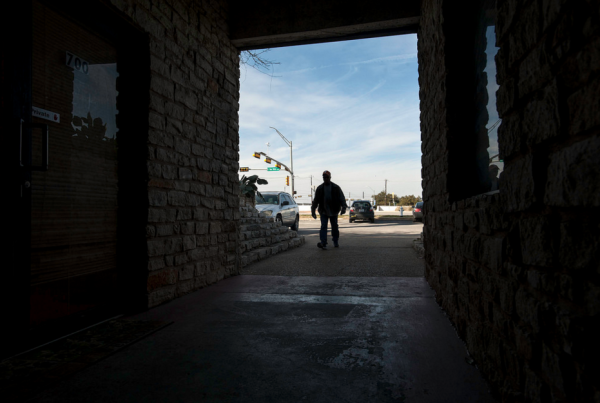This story originally appeared on KUT.
I’m sitting in a black, leather salon chair talking to Jennifer, my hair stylist for the day. We’re discussing how I want to cut my hair. The beauty of radio journalism is that my hair can remain in a top bun every day – like it does – and I don’t have to think about it. It also means I have few answers to Jennifer’s questions.
“So I kind of would like … I have some dead ends,” I say, my voice trailing off. “It’s been a while since I got my hair cut. Maybe a couple inches?”
“How many inches?” Jennifer asks. She’s still working to get her cosmetology certification and doesn’t want to cut more of my hair than she’s supposed to.
The salon sounds like a normal hair salon: buzzing razors and blow dryers. Across the room, someone is getting their hair washed.
But this isn’t your normal hair salon.
All of the employees are teenagers and the salon is inside a high school. Jennifer Ayala, my hairdresser and aspiring cosmetologist, is also a senior at Crockett High School where she spends three hours a day working toward earning her certificate in cosmetology at Salon Crockett.
Crockett High School is one of more than a hundred high schools across Texas that offers a cosmetology certification program. Starting their sophomore year, students like Jennifer learn how to cut and dye hair, give manicures and pedicures, waxing – and more. This year, the high school unveiled a brand new salon with new furniture and more space. The project cost $350,000 and was paid for with money from a 2012 bond.
“Cosmetology is a career, it’s not, like, just playing with hair,” Jennifer says. She’s constantly defending her choice to take cosmetology to people who she says misunderstand just how hard the class is.
“People for some reason in our industry assume that the students are just applying make up on each other and cutting hair,” says Ida Villareal, the cosmetology instructor at Crockett. “We hand out our textbooks to the science teachers. At first their jaws drop when they realize how academic and scientific our curriculum is.”
Students must complete 1,000 hours of beauty courses and 500 hours of related high school courses, like chemistry, biology, anatomy and physiology. Students learn how to identify and treat skin disorders and how to adjust a hair cut to look good on all different heads. As Jennifer cuts my hair, she describes these differences.
“Like see right here,” Jennifer says, pointing to the top back portion of my head. “Some people can have it bigger. They can have the crown wider and when you’re cutting the hair and it falls down you can cut more than they want to. So, if you have to know about the hair structure and everything. The more you know, the better of a hair stylist you can be.”
To get a certificate through the Texas Labor Department, students must also take a written exam. Jennifer takes the class Wednesday. If she passes, she moves on to the timed skills test. Once she passes both, Jennifer will receive a cosmetology certificate and can immediately start working in a salon. Since she got her certificate while she was in college, she won’t have to pay for school unless she wants to get special certifications.
“Cosmetology is like college,” Villareal explains. “Outside of high school this course will cost up to $24,000, so people get in debt to do this.”
Students have to pay for their uniform and mannequin head every year and that’s it. Jennifer says the program has taught her more than how to cut hair. It’s also helped her open up.
“I was very shy,” Jennifer remembers. “I wouldn’t really talk that much. I would, like, be the quiet one just in the class. But I feel like I have outgrown that. I got out of my shell, and I’m more social.”
Jennifer says that’s because her teacher, Villareal, expects a lot of her students.
“She treats us like adults. That is something that other teachers won’t do. They will baby you, they will do things for you. She doesn’t. She goes, “You know what, you’re going to do this because you’re your own person.”
Villareal says it’s great that her cosmetology students are learning a skill before they even graduate high school. But she says today’s employers want graduates who have soft skills, too.
“People who show up to work, show up on time, who are accountable, who are responsible, who work with others well, who step up to the plate where they are not having to tell their employees every little thing to do,” she says. “That is what the employers need now a days and that’s what they are asking for.”
Next year, high school students across the Austin ISD can take cosmetology, too. It’s part of the district’s shared services model which lets students take classes at other high schools if their home high school doesn’t offer it. The class is quickly growing. Only nine seniors are graduating this spring, but 50 sophomores entered the program this school year.
For those interested in getting a hair cut or other beauty service, check out the salon on Fridays between 7:30 and 10:30 a.m.















